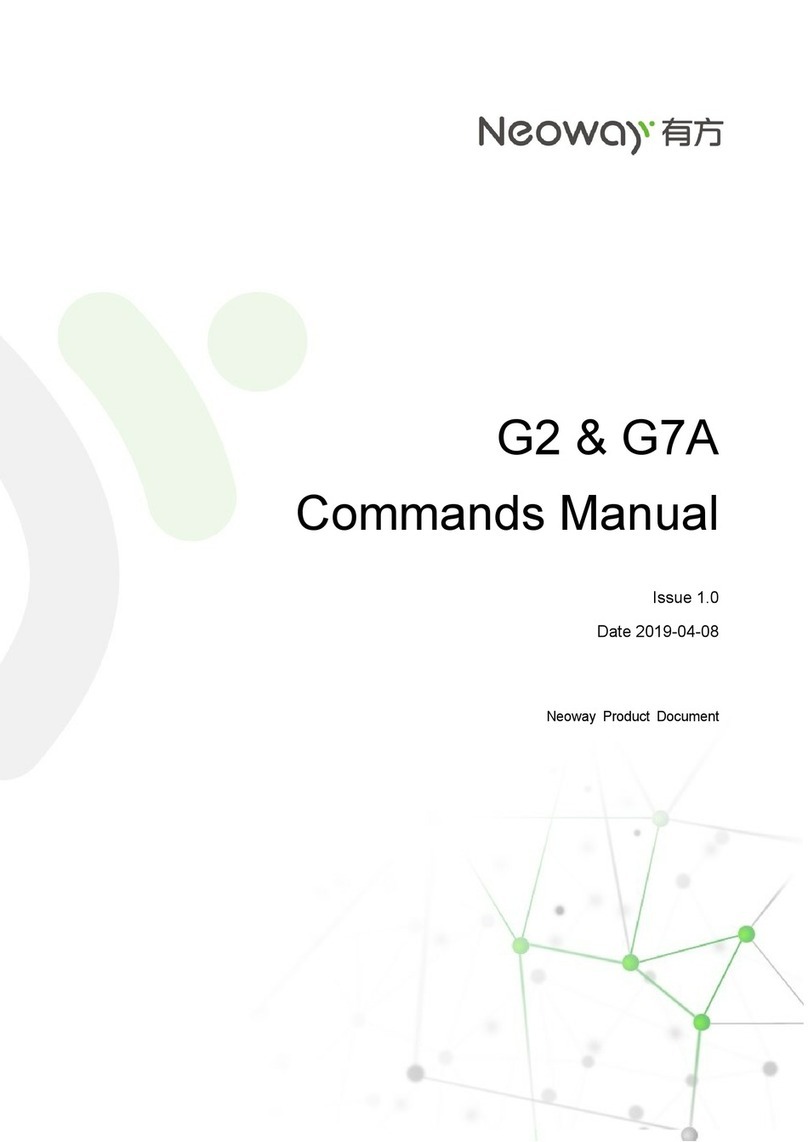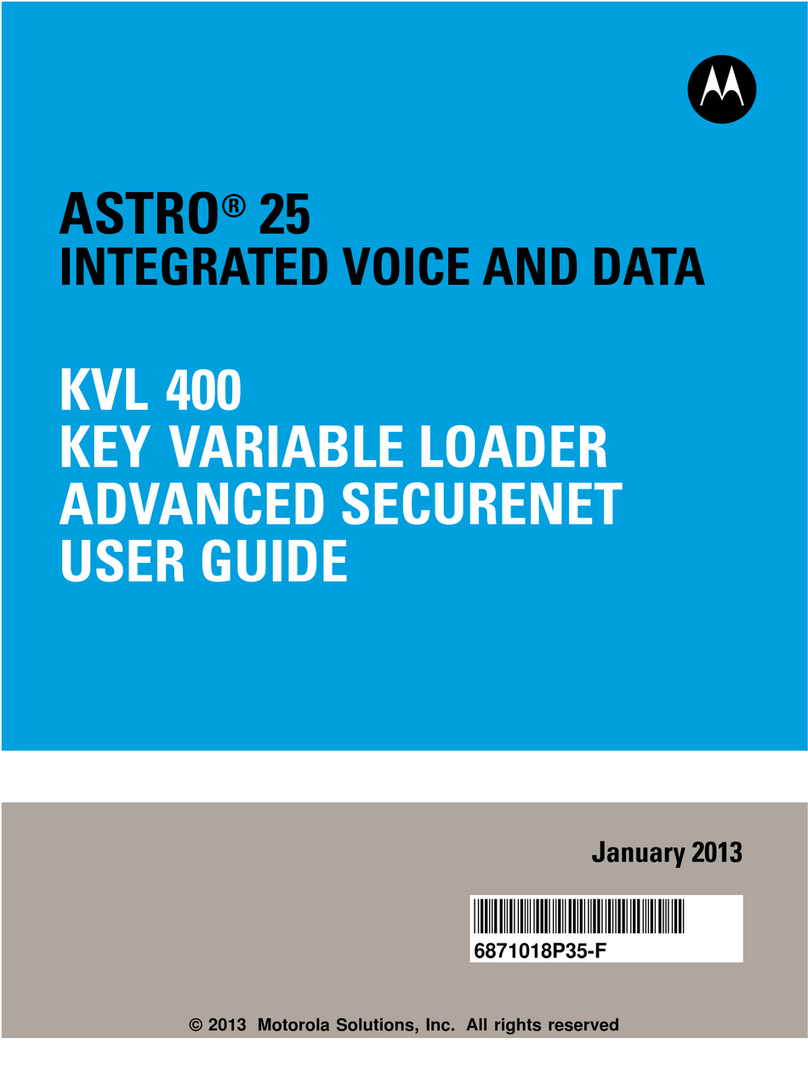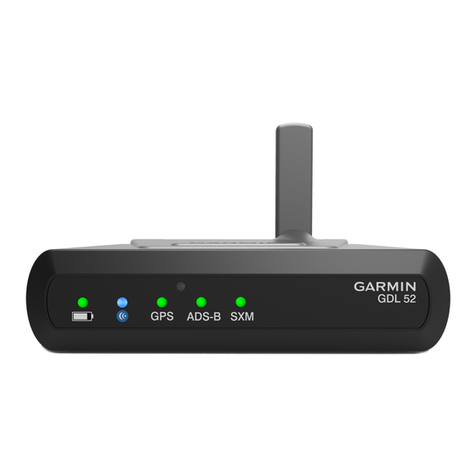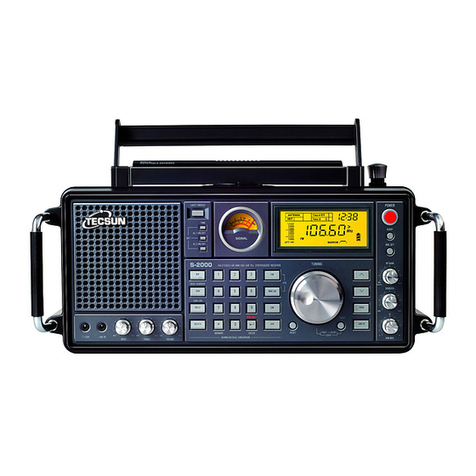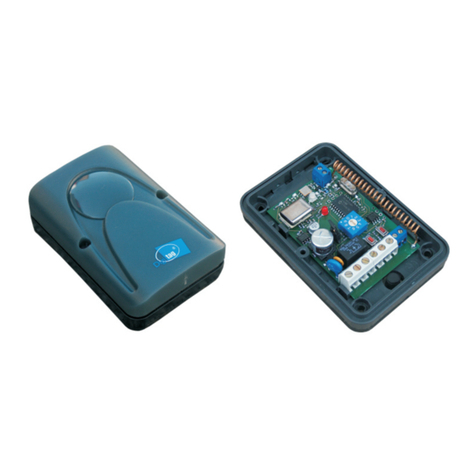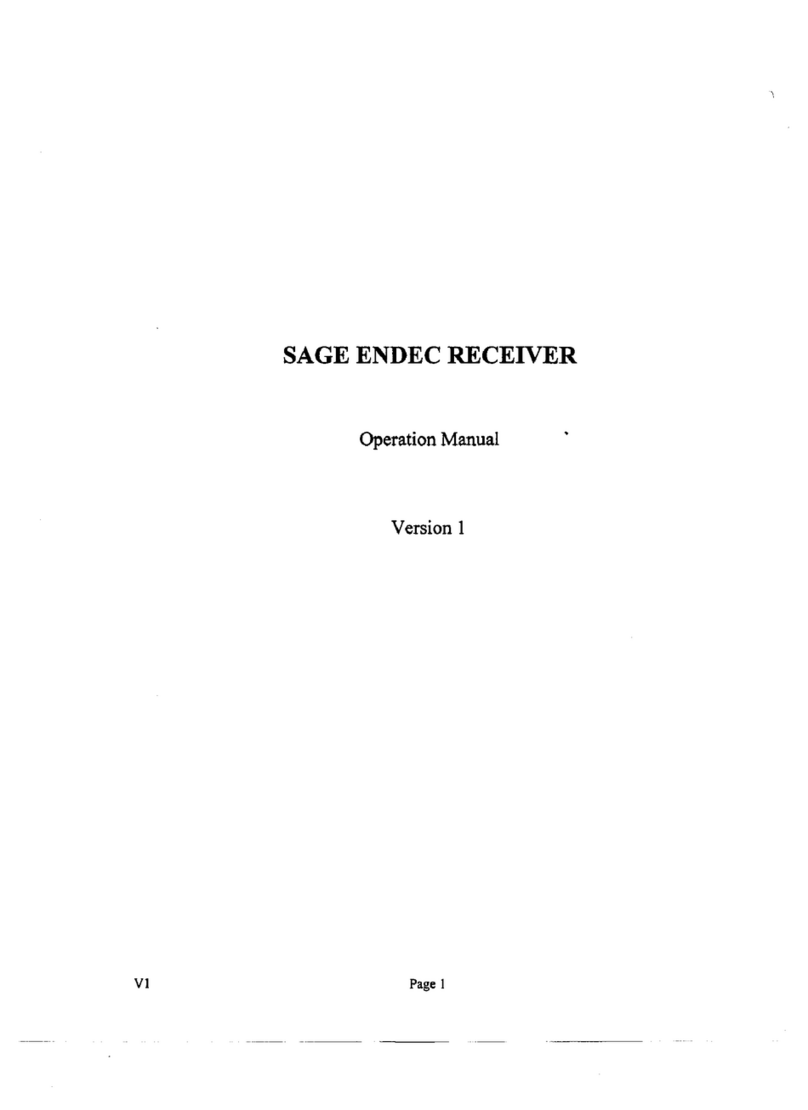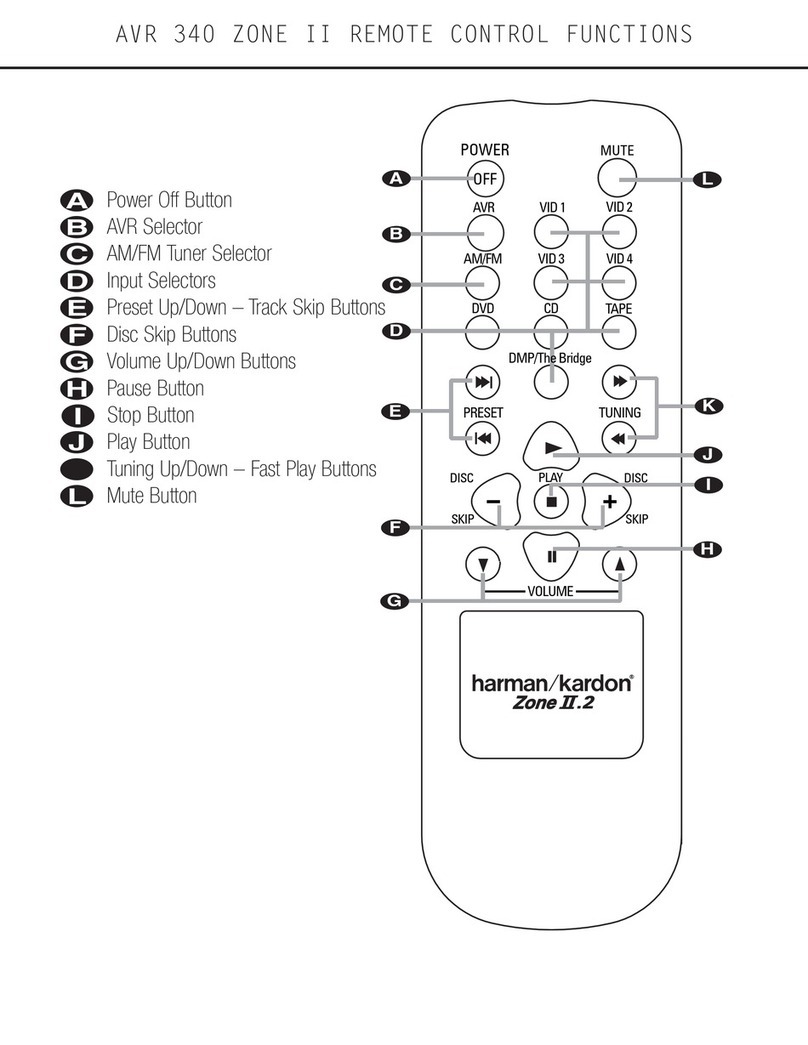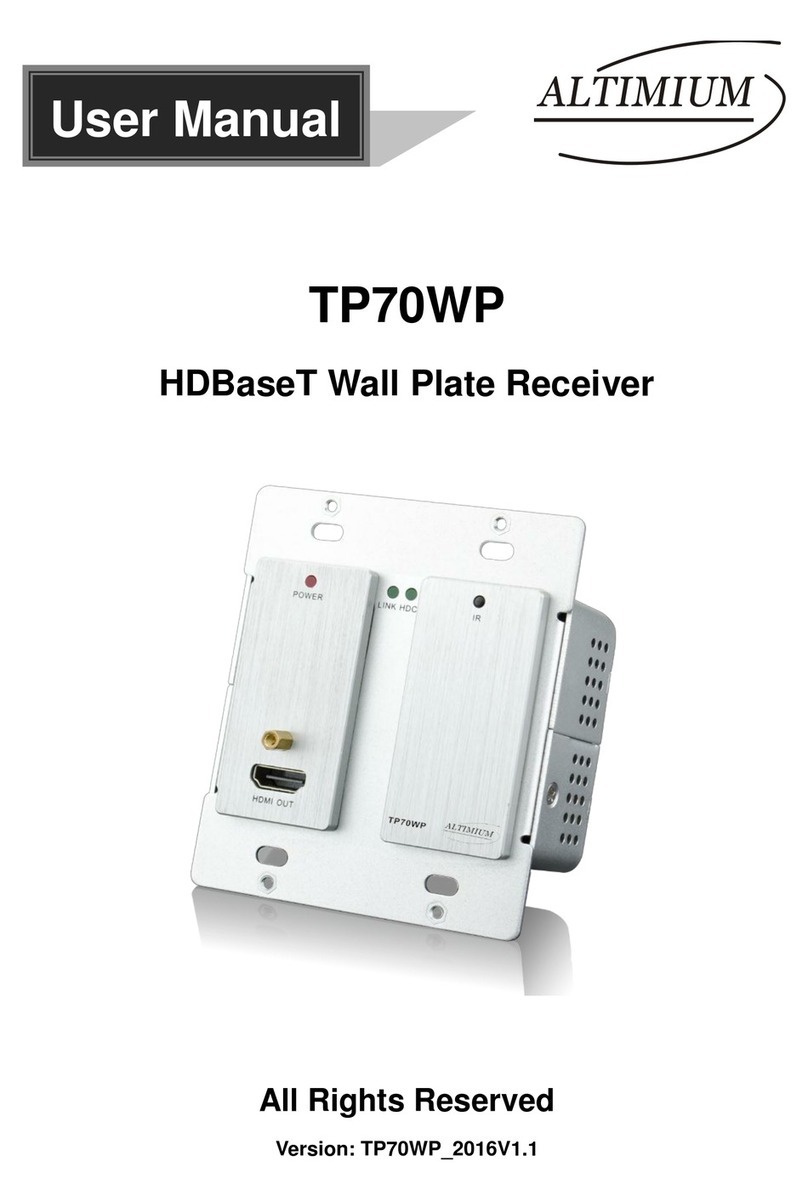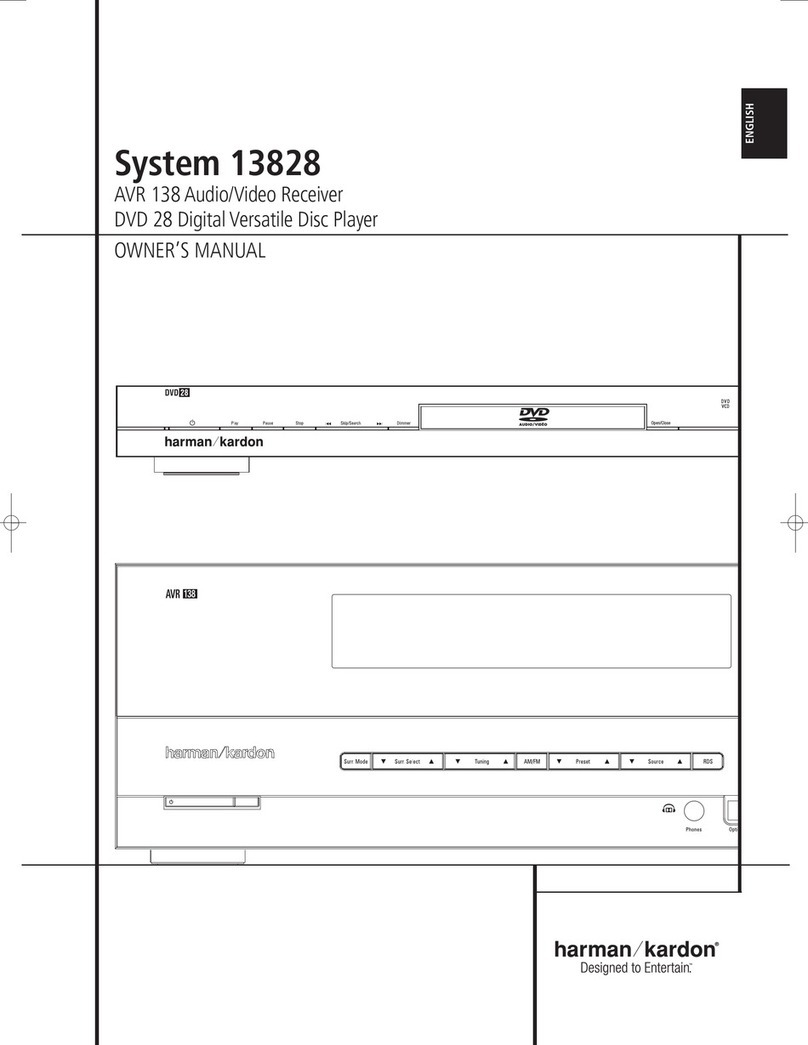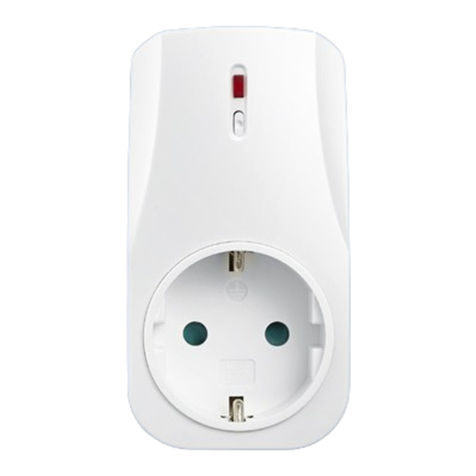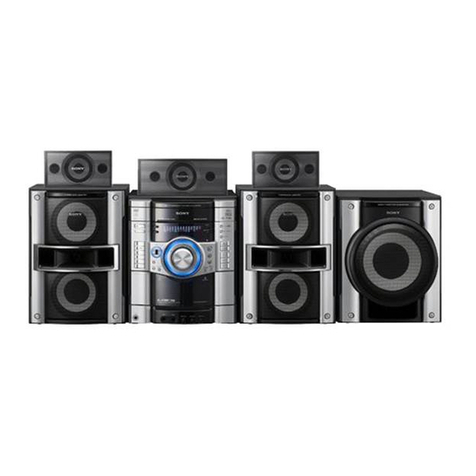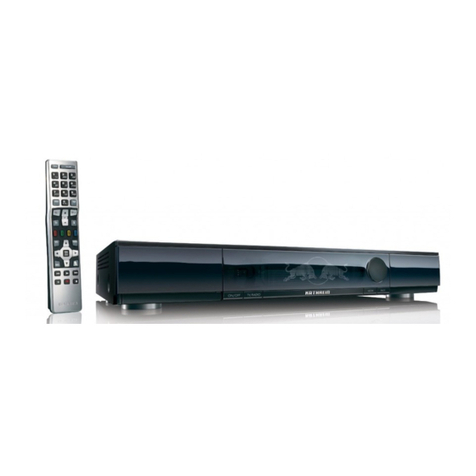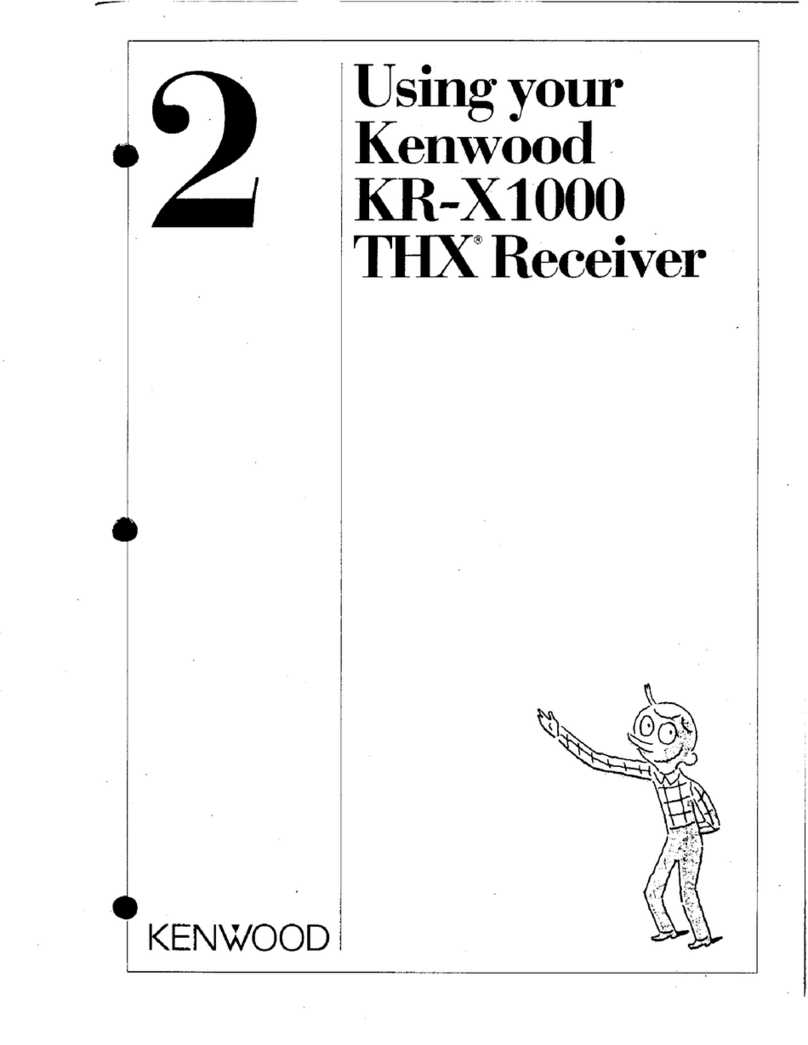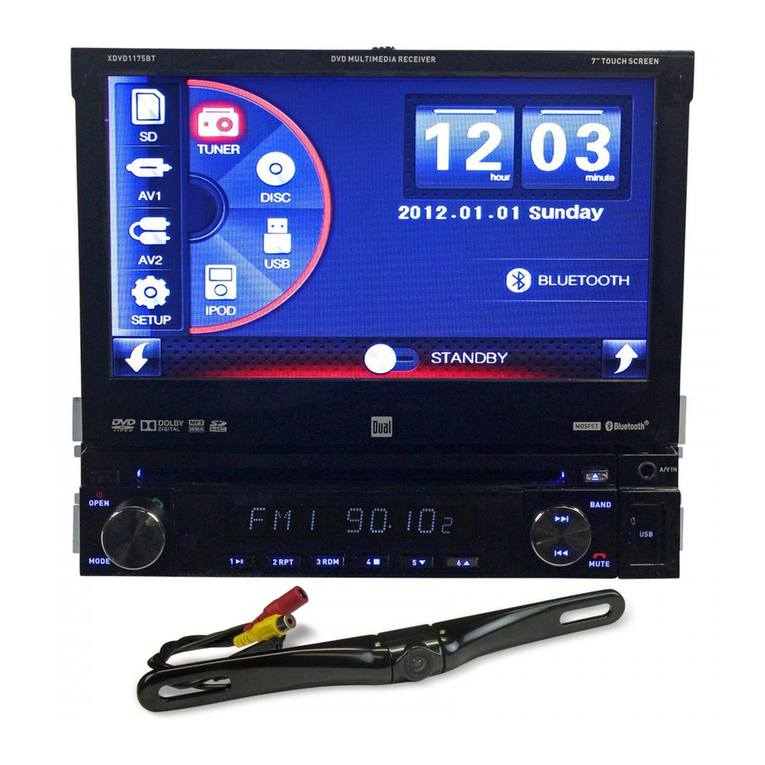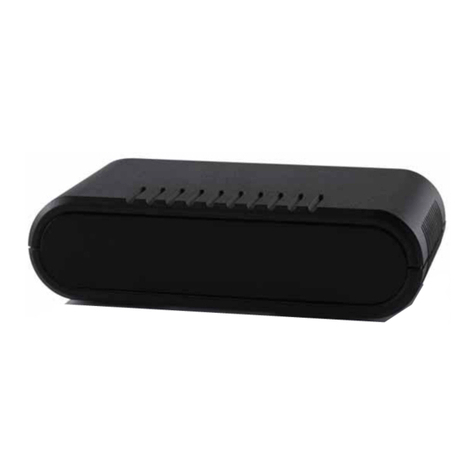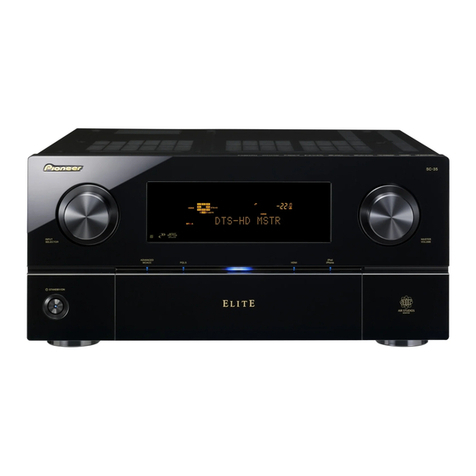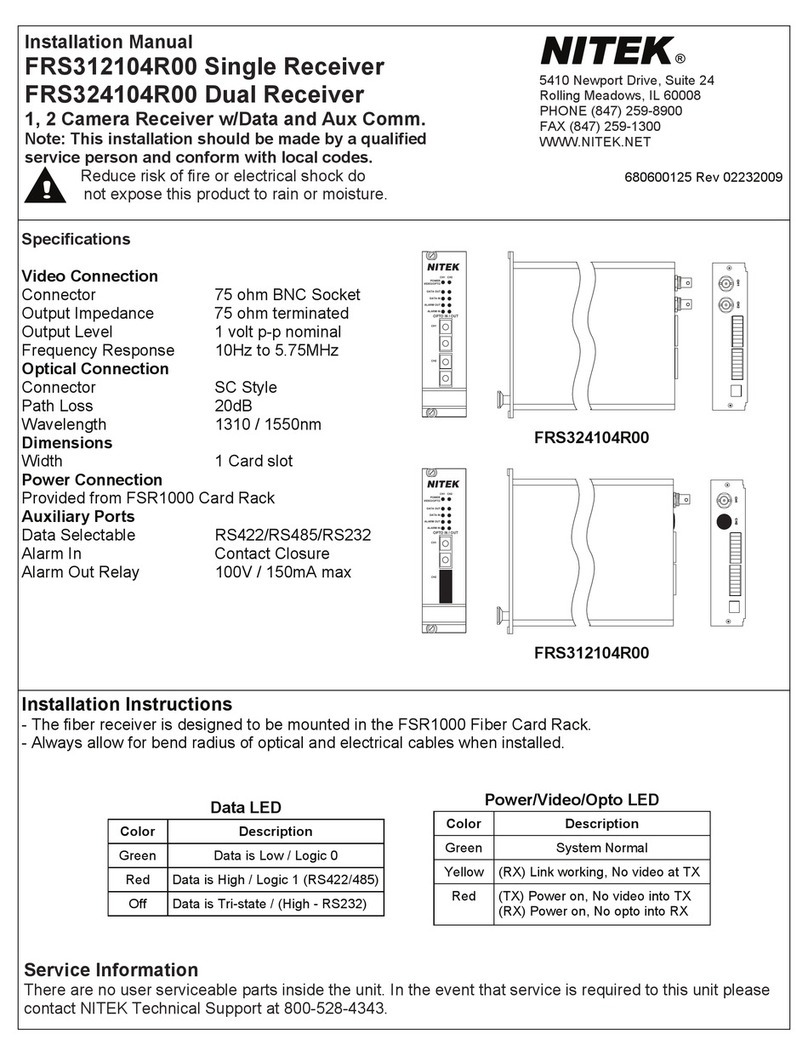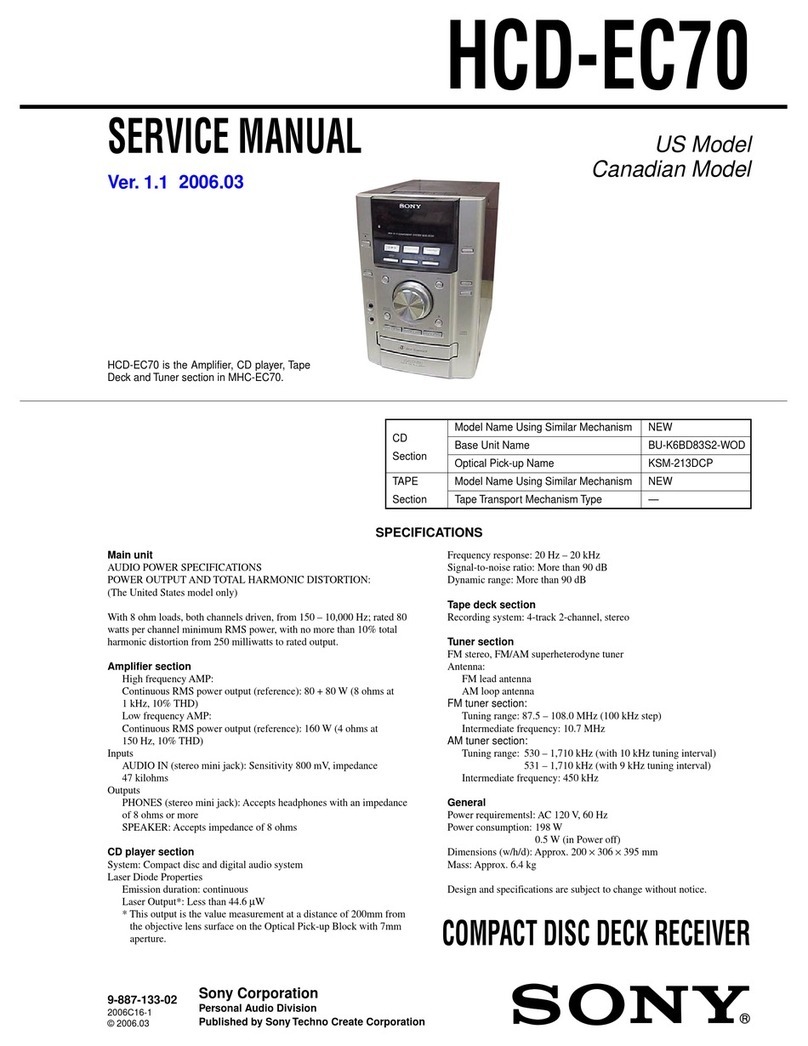Neoway G6 Series Installation manual

G6
Hardware User Guide
Issue 2.0
Date 2018-10-11
Neoway Product Document

G6
Hardware User Guide
Copyright © Neoway Technology Co., Ltd
i
Copyright © Neoway Technology Co., Ltd 2018. All rights reserved.
No part of this document may be reproduced or transmitted in any form or by any means without prior written
consent of Neoway Technology Co., Ltd.
is the trademark of Neoway Technology Co., Ltd.
All other trademarks and trade names mentioned in this document are the property of their respective
holders.
Notice
This document provides guide for users to use G6.
This document is intended for system engineers (SEs), development engineers, and test engineers.
THIS GUIDE PROVIDES INSTRUCTIONS FOR CUSTOMERS TO DESIGN THEIR APPLICATIONS.
PLEASE FOLLOW THE RULES AND PARAMETERS IN THIS GUIDE TO DESIGN AND COMMISSION.
NEOWAY WILL NOT TAKE ANY RESPONSIBILITY OF BODILY HURT OR ASSET LOSS CAUSED BY
IMPROPER OPERATIONS.
THE INFORMATION IN THIS DOCUMENT IS SUBJECT TO CHANGE WITHOUT NOTICE DUE TO
PRODUCT VERSION UPDATE OR OTHER REASONS.
EVERY EFFORT HAS BEEN MADE IN PREPARATION OF THIS DOCUMENT TO ENSURE ACCURACY
OF THE CONTENTS, BUT ALL STATEMENTS, INFORMATION, AND RECOMMENDATIONS IN THIS
DOCUMENT DO NOT CONSTITUTE A WARRANTY OF ANY KIND, EXPRESS OR IMPLIED.
Neoway provides customers complete technical support. If you have any question, please contact your
account manager or email to the following email addresses:
Website: http://www.neoway.com

G6
Hardware User Guide
Copyright © Neoway Technology Co., Ltd
ii
Contents
1 About G6.................................................................................................... 1
1.1 Product Overview......................................................................................................................... 1
1.2 Block Diagram.............................................................................................................................. 1
1.3 Basic Features ............................................................................................................................. 2
2 Module Pins............................................................................................... 4
2.1 Pad Layout ................................................................................................................................... 4
2.2 Pin Description ............................................................................................................................. 5
3 Application Interfaces ................................................................................ 7
3.1 Power Supply Pins ....................................................................................................................... 7
3.2 Work Modes ................................................................................................................................. 8
3.3 nRESET ....................................................................................................................................... 8
3.4 UART.......................................................................................................................................... 10
3.5 1PPS .......................................................................................................................................... 10
3.6 EXT_INT0....................................................................................................................................11
3.7 V_ANT.........................................................................................................................................11
4 Antenna Interface .................................................................................... 12
4.1 Impedance Control..................................................................................................................... 12
4.2 Reference Design of Active GNSS Antenna .............................................................................. 14
4.3 Recommended Antenna............................................................................................................. 15
5 Electric Feature and Reliability ................................................................ 16
5.1 Electric Features ........................................................................................................................ 16
5.1.1 Extreme Operating Conditions .......................................................................................... 16
5.1.2 Recommended Operating Conditions ............................................................................... 16
5.1.3 Current Features ............................................................................................................... 16
5.2 Temperature Features................................................................................................................ 17
5.3 ESD Protection........................................................................................................................... 17
6 Mechanical Features ............................................................................... 18
6.1 Dimensions................................................................................................................................. 18
6.2 Label........................................................................................................................................... 19
6.3 Pack ........................................................................................................................................... 19
7 Mounting G6 onto the Application Board ................................................. 20
7.1 Bottom Dimensions .................................................................................................................... 20
7.2 Application Foot Print ................................................................................................................. 21
7.3 Stencil......................................................................................................................................... 21
7.4 Solder Paste............................................................................................................................... 21
7.5 SMT Furnace Temperature Curve.............................................................................................. 22
8 Safety Recommendations ....................................................................... 23
A Abbreviation............................................................................................. 24

G6
Hardware User Guide
Copyright © Neoway Technology Co., Ltd
iii

G6
Hardware User Guide
Copyright © Neoway Technology Co., Ltd
iv
Table of Figures
Figure 1-1 Block Diagram .................................................................................................................. 2
Figure 2-1 Pin definition of G6 ........................................................................................................... 4
Figure 3-1 Reset controlled by button................................................................................................ 9
Figure 3-2 Reset circuit with triode separating................................................................................... 9
Figure 3-3 Reset timing of G6 ............................................................................................................ 9
Figure 3-4 UART connection............................................................................................................ 10
Figure 3-5 1PPS timing .....................................................................................................................11
Figure 3-6 Internal circuit ..................................................................................................................11
Figure 4-1 L network ........................................................................................................................ 12
Figure 4-2 Split capacitor network.................................................................................................... 12
Figure 4-3 Pi network ....................................................................................................................... 13
Figure 4-4 Recommended RF PCB design ..................................................................................... 13
Figure 4-5 Reference design of active antenna ............................................................................... 14
Figure 6-1 G6 dimensions (Unit: mm).............................................................................................. 18
Figure 7-1 Bottom dimensions of G6 ............................................................................................... 20
Figure 7-2 Recommended PCB foot print (Unit: mm)...................................................................... 21
Figure 7-3 SMT furnace temperature curve ..................................................................................... 22

G6
Hardware User Guide
Copyright © Neoway Technology Co., Ltd
v
Table of Tables
Table 1-1 Variants and GNSS systems.............................................................................................. 1
Table 2-1 IO definition ........................................................................................................................ 5
Table 2-2 Pin Description ................................................................................................................... 5
Table 3-1 Power and clock status and current in different modes ..................................................... 8
Table 4-1 Recommended Antenna................................................................................................... 15
Table 5-1 Extreme operating conditions of G6................................................................................. 16
Table 5-2 Recommended operating conditions of G6...................................................................... 16
Table 5-3 Current features ............................................................................................................... 16
Table 5-4 G6 temperature features .................................................................................................. 17
Table 5-5 G6 ESD protection ........................................................................................................... 17

G6
Hardware User Guide
Copyright © Neoway Technology Co., Ltd
vi
About This Document
Scope
This document is applicable to G6 series.
It defines the features, indicators, and test standards of the G6 module and provides reference for the
hardware design of each interface.
Audience
This document is intended for system engineers (SEs), development engineers, and test engineers.
Change History
Issue
Date
Changes
Changed By
1.0
2017-06
Initial draft
Tian
2.0
2018-08
Modified the supply voltage range
Modified basic features
Added description of nRESET, EXT_INT0, and
antenna interfaces
Add description of work modes
Added current consumption
Zhuo JianZheng

G6
Hardware User Guide
Copyright © Neoway Technology Co., Ltd
vii
Conventions
Symbol
Indication
This warning symbol means danger. You are in a situation that could cause fatal
device damage or even bodily damage.
Means reader be careful. In this situation, you might perform an action that
could result in module or product damages.
Means note or tips for readers to use the module
Related Documents
Neoway_G6_Datasheet
Neoway_G6_Product_Specifications
Neoway_G6_AT_Command_Mannual
Neoway_G6_EVK_User_Guide

G6
Hardware User Guide
Copyright © Neoway Technology Co., Ltd
1
1 About G6
1.1 Product Overview
G6 is a GNSS module that supports BDS B1, GPS L1, and GlONASS L1. ts dimensions are 16 mm x
12.2 mm x 2.4 mm. Integrating a SOC+RF chipset, it is widely used in IoV, handheld devices, and
smart wearables that require high-sensitivity, low power consumption, and cost-effective
positioning/navigation.
G6 includes a few of variants that support different GNSS systems. Table 1-1 List the variants and
systems they support.
Table 1-1 Variants and GNSS systems
Function
Issue
GPS
BDS
GLNASS
Support GAGAN
G6
G6-A1
√
√
G6-B1
√
√
G6-C1
√
G6-D1
√
√
√
1.2 Block Diagram
G6 consists of the following functionality modules that work together to achieve the navigation function:
GNSS digital processor
RF front-end components
RTC
Application interfaces

G6
Hardware User Guide
Copyright © Neoway Technology Co., Ltd
2
Figure 1-1 Block Diagram
VCC V_BCKP
SAW
LNA
Cortex-M3
ROM
RAM
FLASH
PM
GNSS Baseband
Engine
Peripheral
Controller
RX1
TX1
RF_IN
nRESET
EXT_INT0
1PPS
VCC_RF
RX2
TX2
1.3 Basic Features
Parameter
Description
Values
Remarks
Minimum
Typical
Maximum
Unit
Accuracy (open
air)
Horizontal
<3
m
Vertical
<4.5
m
Velocity
<0.1
m/s
Channels
Acquisition
72
Tracking
72
TTFF
(@-130dBm)
Cold start
<28
s
Hot start
1
s
Re-acquisition
1
s
Sensitivity
Acquisition for
cold start-up
-147
dBm

G6
Hardware User Guide
Copyright © Neoway Technology Co., Ltd
3
condition
Acquisition for
hot start-up
condition
-155
dBm
Re-acquisition
-159
dBm
Tracking
-163
dBm
Baud rate
4800
9600
230400
bps
9600Bps by
default
Time update
frequency
1
10
Hz
1Hz by
default
Operating
voltage
VCC
2.7
3.3
3.6
V
V_BCKP
1.4
3.3/3.0
3.6
V
Current
(@instrument)
Acquisition
30
mA
3.3 V power
supply
Tracking
28
mA
3.3 V power
supply
Standby
20
μA
3.3 V
backup
power
supply
Certification
approval
RoHS, CE

G6
Hardware User Guide
Copyright © Neoway Technology Co., Ltd
4
2 Module Pins
There are 24 pins on G6 and their pads are introduced in LCC package.
Power Supply
UART
1PPS
2.1 Pad Layout
Figure 2-1 shows the pad layout of G6.
Figure 2-1 Pin definition of G6
nRESET
EXIN_INT0
NC
1PPS
NC
NC
NC
V_ANT
NC
NC
TX2
RX2
TX1
RX1
V_BCKP
VCC
GND
1
2
3
4
5
6
7
8
G6
Top View
POWER GND NC
ANT UART RESET OTHERS
9
24
23
22
21
20
19
18
10
11
17
16
15
14
12 13
NC
NC
GND
VCC_RF
GND
RF_IN
GND

G6
Hardware User Guide
Copyright © Neoway Technology Co., Ltd
5
2.2 Pin Description
Table 2-1 lists the definition of IO types
Table 2-1 IO definition
IO Type
B
Digital input/output, COMS logic level
DO
Digital output, COMS logic level
DI
Digital input, COMS logic level
PO
Power output
PI
Power supply input
AO
Analog output
AI
Analog input
Level Feature
P1
Digital IO voltage
3.3 V level feature:
VIH=2.0 V~3.6 V, VIL= -0.3 V~0.8 V
VOH=2.4 V~3.3 V, VOL=0 V~0.4 V
Table 2-2 Pin Description
Signal
Pin
I/O
Function
Level Feature
Remarks
Power Interfaces
VCC
23
PI
Main power
supply input
2.7 V~3.6 V
(TYP: 3.3 V)
Supply at most 100mA
V_BCKP
22
PI
Backup power
supply input
1.4 V~3.6 V
(TYP: 3.3/3.0 V)
Inorm=20μA
Supply power for RTC and
backup RAM.
Leave this pin unconnected
if it is not used.
VCC_RF
9
PO
Power supply for
RF components
VCC_RF=VCC
Supply power for external
LNA or active antenna.
Leave this pin unconnected
if it is not used.
GND
10, 12, 13, 24
Ensure that all GND pins
are connected to the
ground.

G6
Hardware User Guide
Copyright © Neoway Technology Co., Ltd
6
Control Interfaces
nRESET
1
DI
System reset
P1
Low level at this pin triggers
reset of the module.
Leave this pin unconnected
or connect it to VCC if it not
used.
EXT_INT0
4
DI
External
interrupt input
P1
Connected to a pull-up
resistor by default.
RF Interface
RF_IN
11
AI
RF signal input
See chapter 4.
UART Interface
TX1
20
DO
Data
transmitting
P1
By default, UART1 is
enabled and UART2 is
disabled. For details, see
section 3.4.
Used for data transmission.
Leave this pin unconnected
if it is not used.
RX1
21
DI
Data receiving
P1
TX2
18
DO
Data
transmitting
P1
RX2
19
DI
Data receiving
P1
Other Interfaces
V_ANT
8
DI
Power supply for active
antenna
1PPS
3
DO
1 pulse per
second signal
P1
Connected to a pull-up
resistor by default.
Leave this pin unconnected
if it is not used.
NC
2, 4, 5, 6,
7, 14, 15,
16, 17,
18, 19
Reserved
Leave these pins
unconnected.

G6
Hardware User Guide
Copyright © Neoway Technology Co., Ltd
7
3 Application Interfaces
There are 24 pins on G6 and their pads are introduced into LCC package. IThe module provides power
interfaces, UART interfaces, 1PPS, and other interfaces. This chapter describes each interface and
their reference designs.
3.1 Power Supply Pins
Signal
Pin
I/O
Function
Remarks
VCC
23
PI
Main power supply input
2.7 V~3.6 V (TYP: 3.3 V)
V_BCKP
22
PI
Backup power supply
input
1.4 V~3.6 V (TYP: 3.3/3.0 V)
Supply power for RTC and backup RAM.
Leave this pin unconnected if it is not used.
VCC_RF
9
PO
RF power output
VCC_RF=VCC
Supply power for external LNA or active antenna
GND
10, 12, 13, 24
Ensure that all GND pins are connected to the
ground.
Power pins should be used respectively following rules below:
VCC
VCC is the main power supply of the module. Its input voltage ranges from 2.7 V to 3.6 V and
the preferable value is 3.3 V.
This pin is used to supply power for the internal baseband, RF, and LNA of the module. The
performance of power supply is a critical path to module's performance and stability.
It is recommended to use a low-noise LDO dedicated for RF as the power supply.
V_BCKP
V_BCKP is the backup power input of the module. Its input voltage ranges from 1.4 V to 3.6 V
and the preferable value is 3.3/3.0 V. Button cell battery or supercapacitor is an option.
It is used to supply power for RTC and backup RAM.
With this power input, the module can save some key ephemeris data after VCC is powered
down so that it is able to achieve hot start and warm start, and position calculation.

G6
Hardware User Guide
Copyright © Neoway Technology Co., Ltd
8
3.2 Work Modes
G6 supports position fix mode, sleep mode, and standby mode.
Position fix mode
In position fix mode, acquisition engine is enabled. The module switches to tracking status to
reduce operating current after obtaining valid position information, all ephemeris and data.
Sleep mode
In sleep mode, the power and clocks of all functionalities are shut down except RTC backup
zone. The power of kernel circuit is not shut down but its clock is disabled.
−The module enters sleep mode if the host sends 23 3E 02 04 01 00 01 08 1E in
hexadecimal format to it through UART.
−It wakes up to enter position fix mode if the host sends any data or EXT_INT0 is pulled low.
To support hot start and warm start, V_BCKP must be able to supply power all the time after
VCC is shut down.
Standby mode
After VCC is shut down, the module enters standby mode. The power and clocks of all
functionalities are disabled except RTC backup zone.
The module enters position fix mode after VCC is powered up.
To support hot start and warm start, V_BCKP must be able to supply power after VCC is shut
down. It is recommended to keep V_BCKP able to supply power all the time so that the module
can fix position fast.
Table 3-1 Lists the clock status and currents in different modes.
Table 3-1 Power and clock status and current in different modes
Work Mode
VCC
V_BCKP
Main Clock
RTC Clock
Current
Position fix mode
ON
ON
ON
ON
𝐼𝑉𝐶𝐶 = 30mA @multiple GNSS
modes
Sleep mode
ON
ON
OFF
ON
𝐼𝑉𝐶𝐶 = 10mA
Standby mode
OFF
ON
OFF
ON
𝐼𝑉_𝐵𝐶𝐾𝑃 =20𝑢𝐴
3.3 nRESET
nRESET is triggered by negative pulse that exceeds 1 ms. This pin is pulled up internally and its typical
high-level voltage is 3.3 V. Leave this pin disconnected if you do not use it.

G6
Hardware User Guide
Copyright © Neoway Technology Co., Ltd
9
If you use an IO system other than 3.3 V, it is recommended to add a triode to separate it. Refer to the
following designs. To reset the module through high level, refer to Figure 3-2.
Figure 3-1 Reset controlled by button
GNSS
Module
nRESET
S1 kΩ
R1
TVS
Figure 3-2 Reset circuit with triode separating
GNSS Module
nRESET
4.7kΩ
47kΩ
R2
R3
Figure 3-3 shows the reset timing of G6.
Figure 3-3 Reset timing of G6
VCC
nRESET
Inactive Active
UART
1ms

G6
Hardware User Guide
Copyright © Neoway Technology Co., Ltd
10
3.4 UART
Signal
Pin
I/O
Function
Remarks
TX1
20
DO
Data transmitting
Enabled by default
RX1
21
DI
Data receiving
TX2
18
DO
Data transmitting
Disabled by default
RX2
19
DI
Data receiving
UART outputs NMEA data at UTC second boundary. By default, UART1 is enabled and UAR2 is
disabled. The host can switch the work mode, baudrate, and UART status through commands. For
details, see Neoway_GNSS_Receiver_Commands_Manual.
G6 supports baudrate ranging from 4800bps to 230400bps. The default baud rate is 9600bps.
Data format: 1 start bit, 8 data bits, 1 stop bit, no checksum bit.
Figure 3-4 shows the connection of UART interface. If the UART does not match the logic voltage of
the MCU, add a level shifting circuit outside of G6.
Figure 3-4 UART connection
RXD
TXD
MCU_TXD
MCU_RXD
GND GND
GNSS Module Client
3.5 1PPS
1PPS signals are output a few seconds after G6 fixes position. Figure 3-5 shows 1PPS timing.

G6
Hardware User Guide
Copyright © Neoway Technology Co., Ltd
11
Figure 3-5 1PPS timing
1s
1us
UTC
Second
Boundry
1PPS
40ms
Start bit Parity Bit
D0...D7
New Start BitStop Bit
TX/RX
3.6 EXT_INT0
This is the external interrupt input signal. It works at low level to wake up G6 from sleep mode or
standby mode.
3.7 V_ANT
V_ANT is the input signal of active antenna. Figure 3-6 shows the internal circuit if this pin. If an active
antenna is used, see reference design in 4.2 . If a passive antenna is used, leave this pin unconnected.
Figure 3-6 Internal circuit
LNA SAW GNSS
Baseband
GNSS Module
RF_IN
V_ANT

G6
Hardware User Guide
Copyright © Neoway Technology Co., Ltd
12
4 Antenna Interface
4.1 Impedance Control
RF_IN is the GNSS RF interface of G6, which requires a characteristic impedance of 50Ω.
Figure 3-6 shows the GNSS structure inside G6. Control the impedance of the traces between the pins
and antenna to ensure the RF performance. An impedance matching circuit, such as L network, split
capacitor network, and pi network is mandatory in between. Pi network is recommended.
Figure 4-1 L network
RF_IN
GNSS
Module
Z1
Z2
D1
Figure 4-2 Split capacitor network
RF_IN
GNSS
Module
Z1
Z2
D1
Z3
This manual suits for next models
4
Table of contents
Other Neoway Receiver manuals
